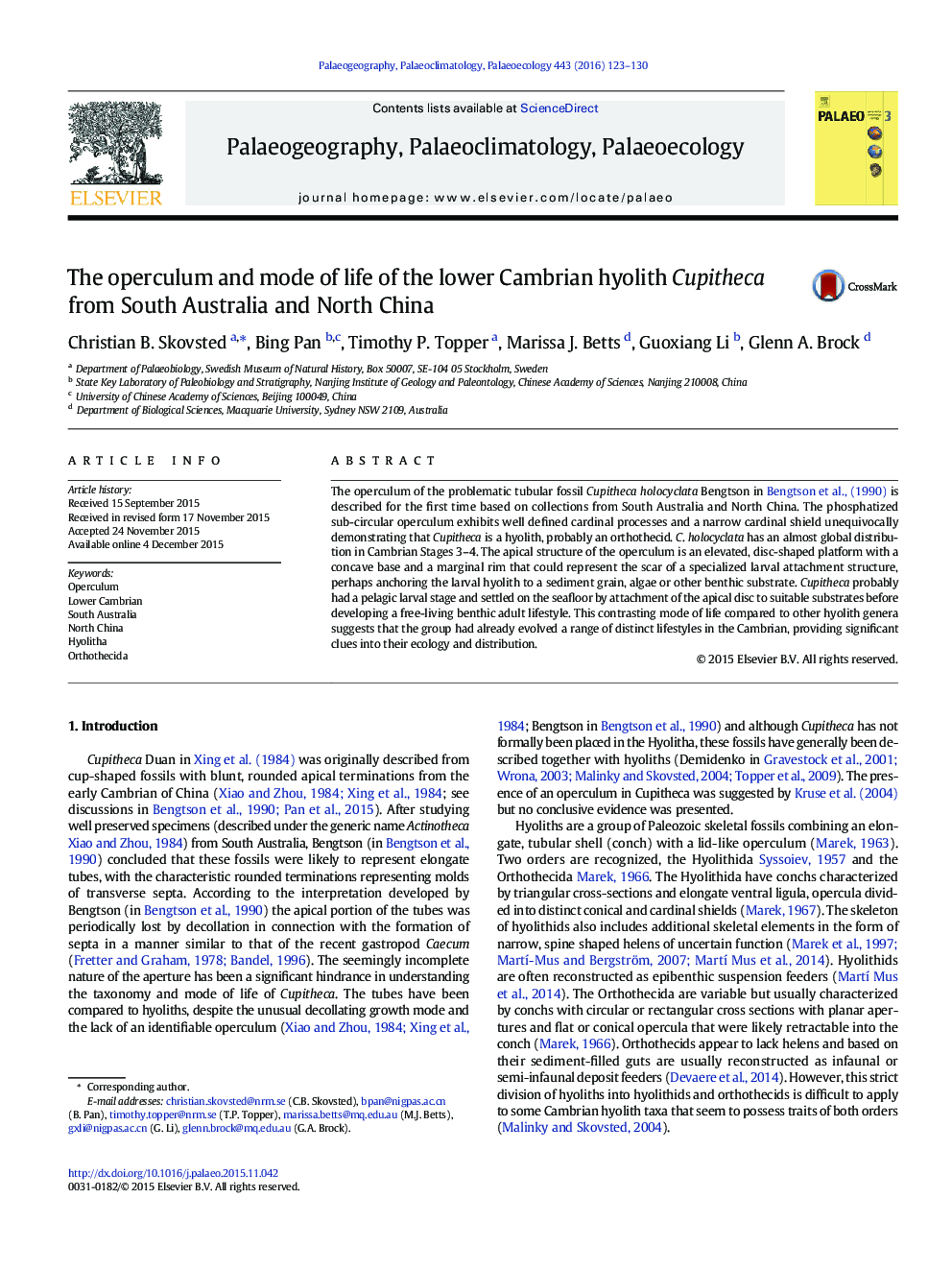| Article ID | Journal | Published Year | Pages | File Type |
|---|---|---|---|---|
| 6349225 | Palaeogeography, Palaeoclimatology, Palaeoecology | 2016 | 8 Pages |
â¢The operculum of the tubular fossil Cupitheca is described for the first time.â¢The new material shows that Cupitheca is a hyolith, probably an orthothecid.â¢Cupitheca had a pelagic larval stage and a benthic adult life stage.â¢The Cupitheca operculum preserves a possible larval attachment scar.â¢The scar probably attached the larva to algae or benthic substrates.
The operculum of the problematic tubular fossil Cupitheca holocyclata Bengtson in Bengtson et al., (1990) is described for the first time based on collections from South Australia and North China. The phosphatized sub-circular operculum exhibits well defined cardinal processes and a narrow cardinal shield unequivocally demonstrating that Cupitheca is a hyolith, probably an orthothecid. C. holocyclata has an almost global distribution in Cambrian Stages 3-4. The apical structure of the operculum is an elevated, disc-shaped platform with a concave base and a marginal rim that could represent the scar of a specialized larval attachment structure, perhaps anchoring the larval hyolith to a sediment grain, algae or other benthic substrate. Cupitheca probably had a pelagic larval stage and settled on the seafloor by attachment of the apical disc to suitable substrates before developing a free-living benthic adult lifestyle. This contrasting mode of life compared to other hyolith genera suggests that the group had already evolved a range of distinct lifestyles in the Cambrian, providing significant clues into their ecology and distribution.
Graphical abstractDownload high-res image (316KB)Download full-size image
